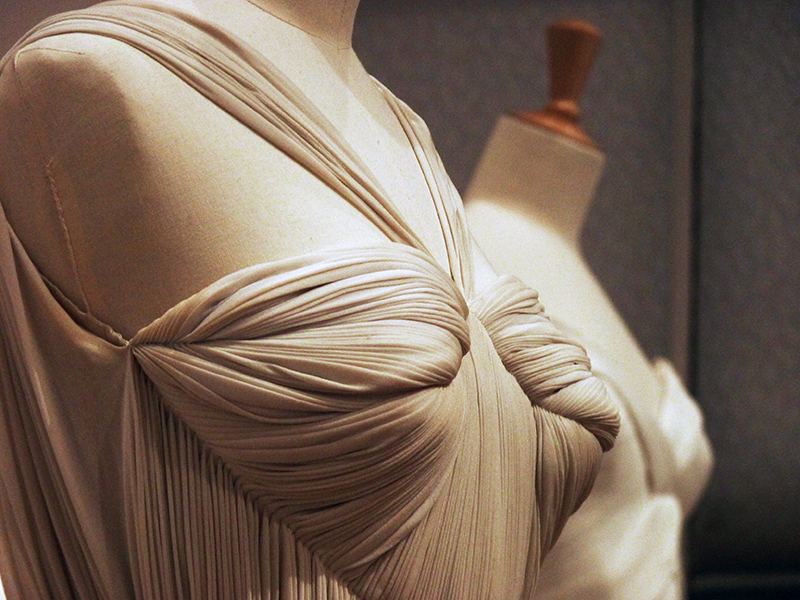
On October 28, 1966, Madame Gres attends a Los Angeles showing of her Spring 1967 collection.It is not often that fashion acquires genius but, once in a while, it shows up. With her trademark beige turban and straightforward clothing, Madame Grès became elusive except for her commitment to couture, the art form she adored.
Germaine Emilie Krebs took her first alias, Alix Barton, as a milliner. Alix first made her mark on couture in 1936, and in 1942, she dropped Barton and took the surname Grès from her only marriage.
As Madame Grès, or simply Grès, she experimented with fabric and form to achieve perfection. A trained sculptor, her approach informed mathematical agility to designing with fabric. She was not known to use a pattern to create, nor toiles (muslins), and she minimized needle and thread use because, as she often stated, she had no other choice.
From the beginning…I didn’t have the knowledge. I took the material and worked directly on it. I used the knowledge I had, which was sculpture.
Her famous Grecian-influenced column gowns of the 1930s, made of silk, rayon and later, polyester jersey, are the anthesis of her oeuvre. The dresses, sculpted and sewn on the body, selvedge to selvedge, no two alike using an average of 13 to 23 meters of uncut fabric, remained weightless. Grès continued to be influenced by multicultural costumes throughout her career.
With her house thriving in the 1950s and 1960s, she introduced her perfume Cabochard (which translates to "pigheaded"). Ironically, the successful scent's name was deemed appropriate to Grès, considering her attitude to designing anything other than couture — she created her first ready-to-wear collection in 1981 — which ultimately restricted the house's growth.
Her death, like her life was shrouded in mystery. While it was reported to the fashion press falsely in 1994, her actual passing a year earlier was kept secret by her daughter.
